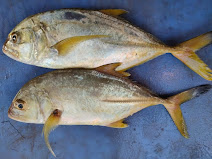
Many shark species are overfished and face the threat of extinction. Sharks also have high mercury levels due to their position at the top of the food chain, posing health risks to humans.

Swordfish are high in mercury and can pose significant health risks if consumed frequently. Additionally, certain populations are overfished, and the methods used to catch them often result in bycatch of other marine species.

King mackerel is known for having high mercury levels, which can be particularly dangerous for children, pregnant women, and nursing mothers.
| SUBSCRIBE TO MY CHANNEL |
|---|

Orange roughy has a very slow growth rate and can live up to 100 years, making it highly vulnerable to overfishing. It’s also caught using trawling methods that destroy seafloor habitats.

Overfishing has led to a dramatic decline in bluefin tuna populations, making it an endangered species. Additionally, it has high levels of mercury, which can be harmful to human health, especially for pregnant women and young children.

This fish is often caught using deep-sea trawlers, which can cause significant damage to the ocean floor and other marine life. It also faces issues with overfishing and illegal fishing practices.

Grouper species are often overfished and have long lifespans, making them slow to reproduce and recover from population declines. They are also prone to ciguatera poisoning.

Monkfish populations have been heavily targeted, leading to concerns about overfishing. Although there have been efforts to manage and rebuild stocks, they remain vulnerable in some regions

Tilefish, especially the larger species like the golden tilefish, are known for accumulating high levels of mercury. This is due to their long lifespan and position in the food chain. High mercury levels can pose serious health risks, particularly to pregnant women, young children, and those with compromised health.

Grouper species are often overfished and have long lifespans, making them slow to reproduce and recover from population declines. They are also prone to ciguatera poisoning.
Sustainable Alternatives
- Look for fish labeled as sustainably sourced or certified by organizations.
- Choose species that are known to be more abundant and are caught using environmentally friendly methods, such as pole-and-line or handline fishing.
- Consider eating more plant-based seafood alternatives to reduce pressure on marine ecosystems.
"Opt for sustainable and safer seafood choices!
Like and subscribe for more seafood tips!"






 Top 10 Fishes to Avoid Eating and why
Top 10 Fishes to Avoid Eating and why







0 comments:
Post a Comment